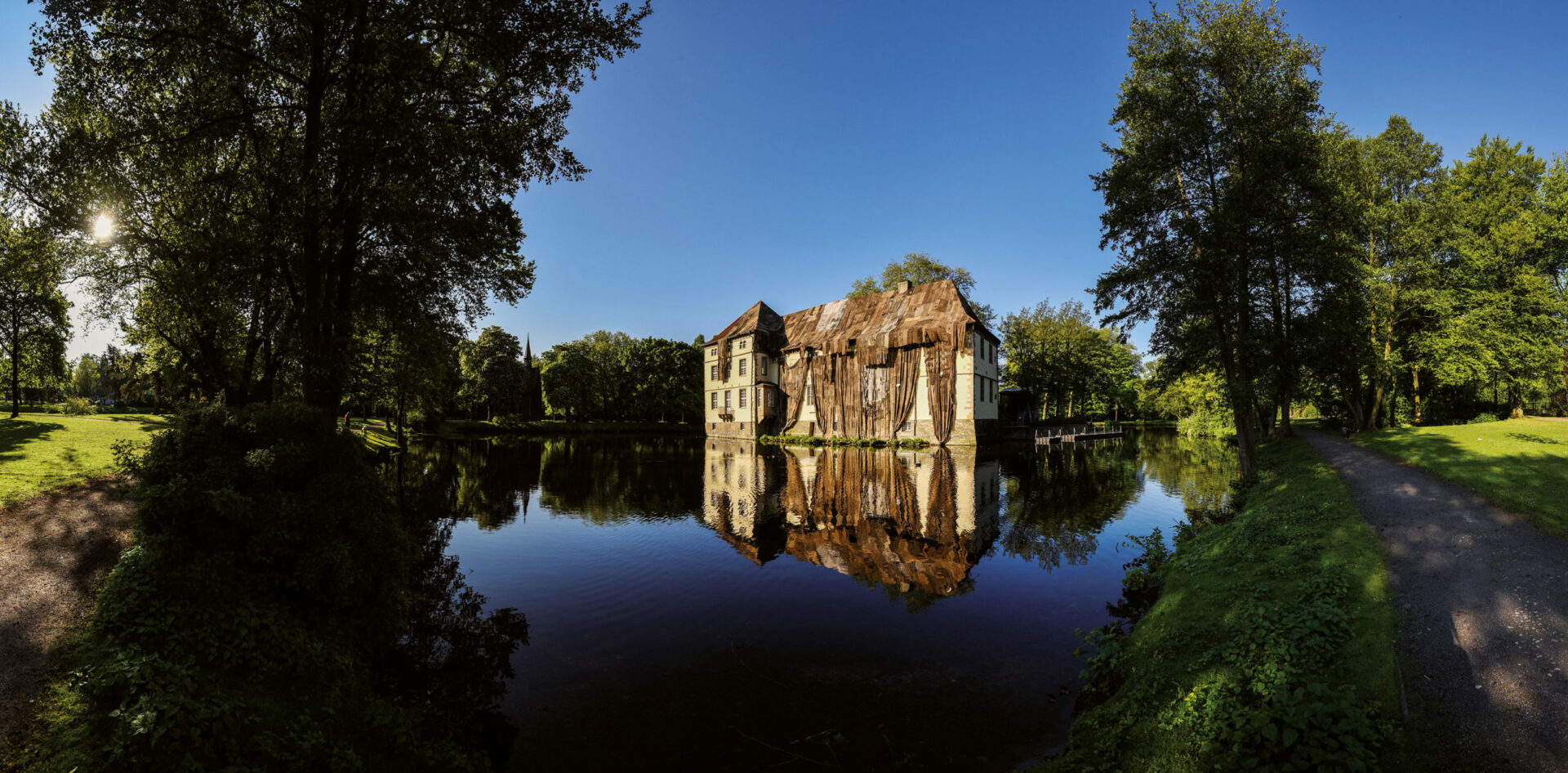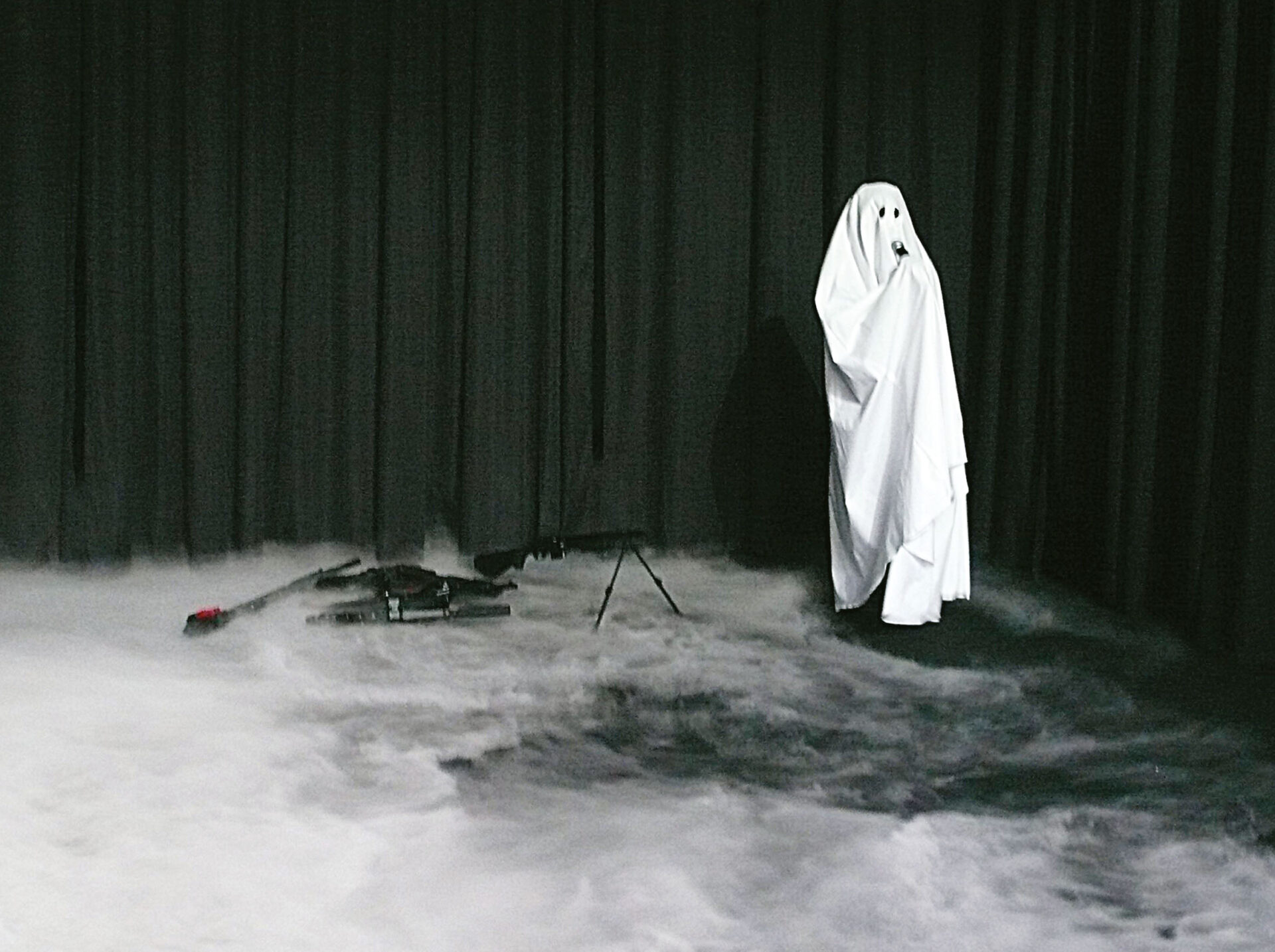
Jute, Entangled Labour, and Global Capital
For Out of Bounds (2015), Mahama’s contribution to the 56th Venice Biennale and one of his largest projects to date, he occupied a three-hundred-metre-long corridor with three thousand kilograms of jute fabric. Heavy panels of rough, tattered jute swallowed the space, and passers-by beneath it. Sometimes, clusters of trinkets and household materials — tags, braided rope, netting — were sewn into the fabric as evidence of how these bags were originally made, identified, and exchanged. Some panels were branded with their trademark place of origin or “Product of Ghana,” and others were stamped with sporadic dates or signifiers indicating past travels, former owners, and previous usages.




